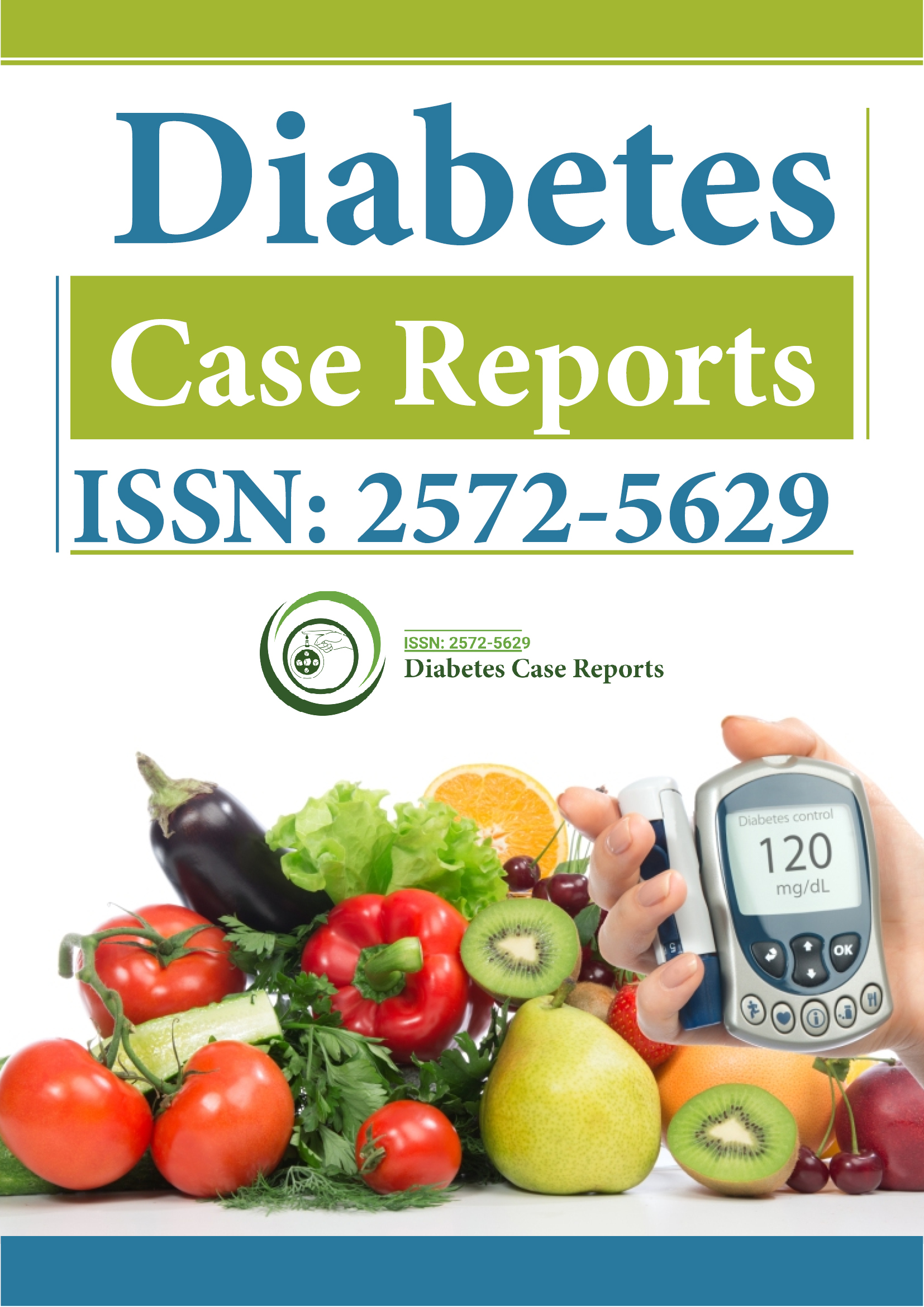Indexed In
- RefSeek
- Hamdard University
- EBSCO A-Z
- Euro Pub
- Google Scholar
Useful Links
Share This Page
Journal Flyer

Open Access Journals
- Agri and Aquaculture
- Biochemistry
- Bioinformatics & Systems Biology
- Business & Management
- Chemistry
- Clinical Sciences
- Engineering
- Food & Nutrition
- General Science
- Genetics & Molecular Biology
- Immunology & Microbiology
- Medical Sciences
- Neuroscience & Psychology
- Nursing & Health Care
- Pharmaceutical Sciences
Opinion Article - (2024) Volume 9, Issue 4
Age-Stratified Analysis of Hematologic Abnormalities in Diabetic Patients
Juliana Tamma*Received: 20-Nov-2024, Manuscript No. DCRS-24-28237; Editor assigned: 22-Nov-2024, Pre QC No. DCRS-24-28237(PQ); Reviewed: 10-Dec-2024, QC No. DCRS-24-28237; Revised: 17-Dec-2024, Manuscript No. DCRS-24-28237(R); Published: 24-Dec-2024, DOI: 10.35841/2572-5629.24.9.224
Description
Children and adolescents with diabetes, particularly those with Type 1 Diabetes (T1DM), are particularly susceptible to a range of hematological complications. The immature immune system and rapid growth spurts during this developmental phase contribute to a heightened risk of these abnormalities. It is a metabolic disorder characterized by hyperglycemia, exerts a profound influence on various physiological systems, including the hematopoietic system. The interplay between diabetes and hematological parameters is complex and multifaceted, exhibiting significant variations across different age groups. This review examines into the age-specific hematological abnormalities observed in diabetic patients, highlighting the unique challenges faced by each demographic. Adults with diabetes, especially those with Type 2 Diabetes (T2DM), face a distinct set of hematological challenges. The aging process, along with the long-term effects of chronic hyperglycemia and associated comorbidities, contribute to these abnormalities. Sustained elevated blood glucose levels can directly impair the function of hematopoietic stem cells, the progenitors of all blood cells. This can lead to reduced proliferation and differentiation of these cells, ultimately affecting the production of red blood cells, white blood cells and platelets. Chronic hyperglycemia generates Reactive Oxygen Species (ROS), which can damage cellular components, including DNA, proteins and lipids. This oxidative stress can compromise the integrity of hematopoietic cells, leading to their dysfunction and premature senescence. Diabetes is associated with a low-grade chronic inflammatory state, characterized by elevated levels of inflammatory cytokines. These cytokines can disrupt the microenvironment of the bone marrow, where hematopoiesis occurs, further impairing blood cell production. Endothelial dysfunction, a hallmark of diabetes, can impair the delivery of nutrients and oxygen to hematopoietic tissues, compromising their function. Additionally, endothelial dysfunction can promote the formation of blood clots, increasing the risk of thrombotic events. The manifestation of hematologic abnormalities in diabetic patients varies across different age groups. This variability is attributed to a combination of factors, including age-related physiological changes, the duration of diabetes and the presence of comorbidities. In children and adolescents with diabetes, hematologic abnormalities are primarily associated with the complications of diabetes itself. Anemia is a common finding, often attributed to iron deficiency due to poor dietary intake or increased blood loss during puberty. Additionally, children with diabetes may experience leukocytosis, an elevated white blood cell count, which can be a marker of chronic inflammation. Adults with diabetes exhibit a wider spectrum of hematologic abnormalities. Anemia remains a prevalent concern, with both iron deficiency anemia and anemia of chronic disease being common. Macrocytosis, characterized by the presence of large red blood cells, is also frequently observed in this age group. This may be attributed to the effects of diabetes on vitamin B12 and folate metabolism. The elderly population with diabetes faces a unique set of hematologic challenges. Age-related physiological changes, such as decreased bone marrow function and altered immune responses, can exacerbate the impact of diabetes on hematopoiesis. Anemia is particularly prevalent in this age group, often due to a combination of iron deficiency, vitamin deficiencies and chronic disease. Additionally, the risk of bleeding and clotting disorders increases with age, particularly in the context of diabetes. The recognition and management of hematologic abnormalities in diabetic patients are essential for optimizing their overall health and well-being.
Conclusion
Regular monitoring of Complete Blood Count (CBC) parameters is recommended for all diabetic patients, with more frequent assessments in those with risk factors for hematologic complications. The presence of comorbidities, such as chronic kidney disease and cardiovascular disease, can exacerbate hematologic abnormalities. Addressing these comorbidities through appropriate medical interventions is essential. In specific cases, targeted therapies may be necessary to address underlying hematologic abnormalities. For example, erythropoietin-stimulating agents may be used to treat anemia of chronic disease, while anticoagulants may be prescribed to prevent thrombotic events. By implementing comprehensive strategies that address glycemic control, nutritional deficiencies and comorbidities, healthcare providers can effectively manage hematologic abnormalities and improve the overall health outcomes of diabetic patients across all age groups.
Citation: Tamma J (2024). Age-Stratified Analysis of Hematologic Abnormalities in Diabetic Patients. Diabetes Case Rep. 9:224
Copyright: © 2024 Tamma J. This is an open-access article distributed under the terms of the Creative Commons Attribution License, which permits unrestricted use, distribution, and reproduction in any medium, provided the original author and source are credited.
